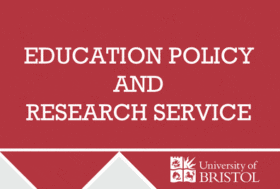Instructional videos, peer feedback and celebrating success

Context
Junior School Vlaskamp is one campus of the British School in the Netherlands, an international school with a diverse student body of more than 80 nationalities and 450 pupils on roll. The school is both inclusive and non-selective. All instruction is given in English and we can offer the best of the English education system. Some pupils speak English as their first language and others are new to the language. In Year 3, we have three classes of between 18 and 20 pupils with a range of experience in English and a range of needs.
Challenge
During the period of remote learning, which lasted in the Netherlands for 45 school days, one of the main challenges was in keeping students engaged and motivated in their learning so that they would be able to work independently (if necessary) and maximise learning time to produce high-quality outcomes. For some parents with busy jobs, it was very difficult to find time to support one or more children for a substantial period of each day, so maximising opportunities for children to access learning independently was also a priority.
Innovation
A campus decision was made that students would preemptively be placed into small groups (of between 3-6 pupils). Groups were able to meet daily with the class teacher and the teaching assistantAn adult that assists a teacher in the classroom for 45-60 minutes. Small group sizes and carefully selected groupings allowed time to be maximised. Time together was used to share the previous day’s learning and introduce any learning for the current day. For parity between Year 3 classes, resources and a rough outline of discussions were agreed and shared in advance. Initially it was important to ensure online etiquette, and behavioural routines were established. A main priority in these daily sessions was the sharing and celebration of students’ work. Analysing and exploring as a group how learning had been successful was a priority. Giving students opportunities to explain what they had enjoyed about another child’s work mimicked the supportive and nurturing ethos of the classroom whilst also raising the profile of the learning taking place. Additionally, this discussion and articulation linked well with a whole-school oracy project underway before lockdown. There was a noticeable improvement in the standard of work between the first and the second lockdowns in part because children knew they would be sharing with their peers.
The final part of the session was allocated to explaining and clarifying the independent learning that would take place that day. As a year group team, we recognised that creating educational videos using both ‘Educreations’ and ‘Youtube’ would be worth the time spent creating them. Firstly, creating videos was the easiest way to familiarise parents and children with the methods and strategies that we use, as well as explicitly being able to model any technical language. This worked particularly well in maths, where parents often find supporting children a challenge when they are unfamiliar with recent pedagogy, methods and strategies. Secondly, videos allowed children to work much more independently (if required) as they were designed to mimic the learning that would take place in the classroom: working in small steps; using modelling to show students how to be successful; incorporating opportunities for retrieval practice and the use of manipulatives. A final whole class session gave opportunities to recreate the holistic classroom atmosphere. Playing games, reading and shorter activities were key here. As a year-team, we recognised this was a prime opportunity to share students’ work and successes with the whole class, thereby reinforcing expectations and motivating students.
Recommendations
- The creation of educational videos to support independent learning so that students are able to work at their own pace and possibly without support from parents. This also acts as guidance for parents who may be unfamiliar with recent teaching methods and vocabulary.
- Using a significant proportion of time together online to share and review independent work that students have completed. This reinforces the learning and creates purpose for the tasks, while also creating opportunity to promote oracy. Sharing of successes and praise from both students and adults also mimics the positive classroom ethos.
- Working closely alongside year group colleagues to encourage parity between discussions and experiences with students. Preparing resources and videos together ensures that the learning experience for all groups of students is carefully considered.










